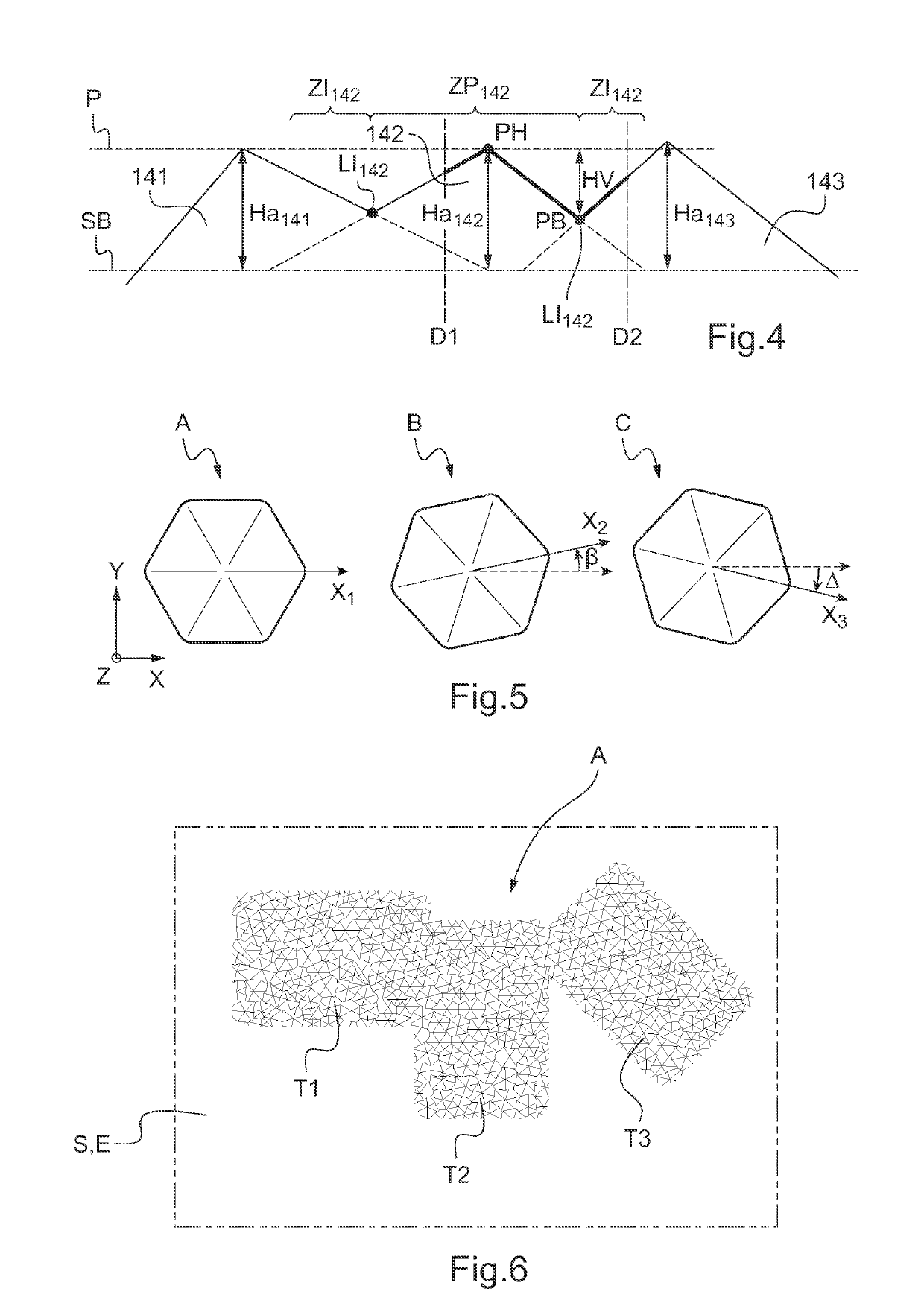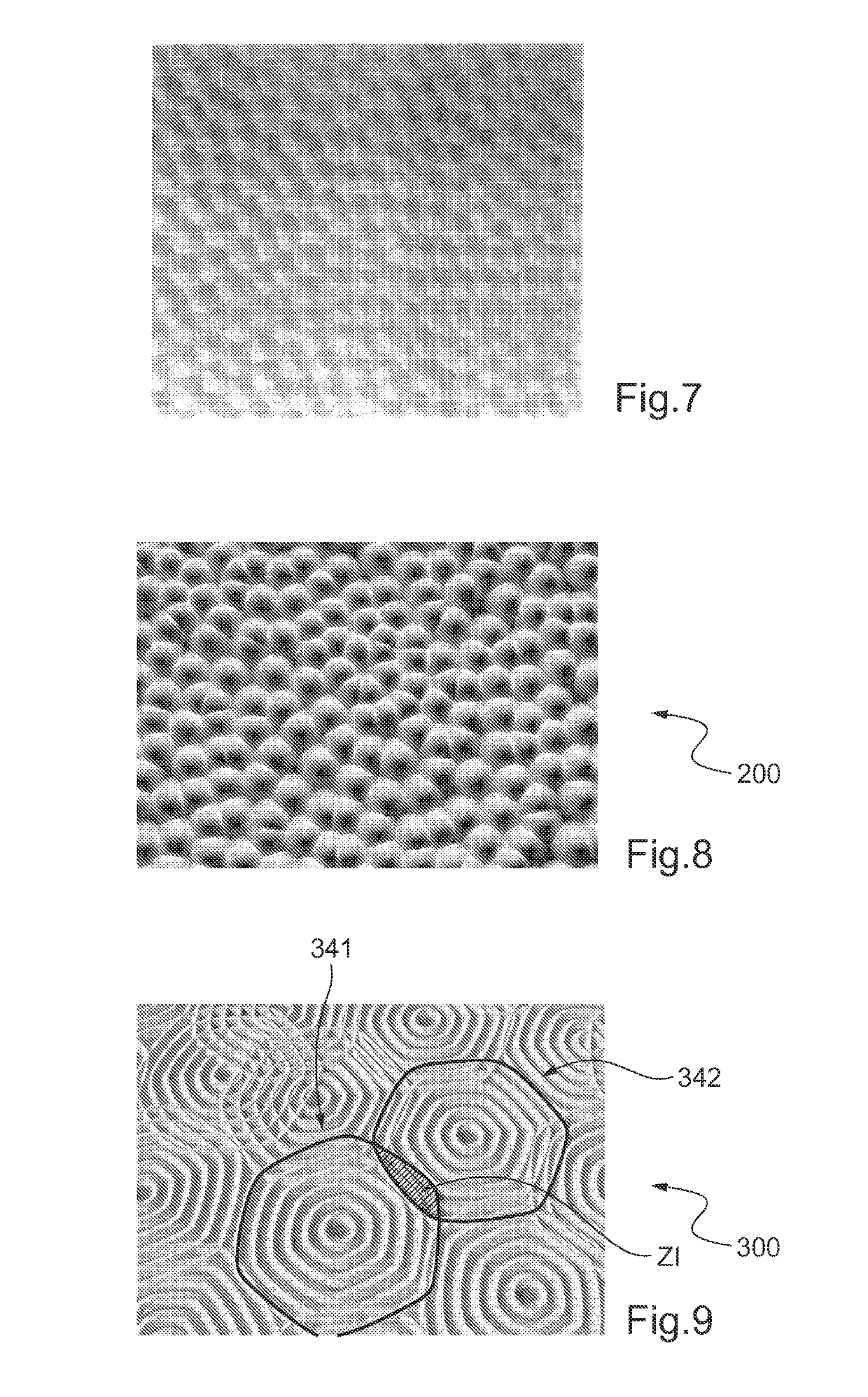Matrix for imprinting a raised pattern on a coating
- Summary
- Abstract
- Description
- Claims
- Application Information
AI Technical Summary
Benefits of technology
Problems solved by technology
Method used
Image
Examples
first embodiment
[0063]FIG. 1 shows a mat 100 intended for imprinting a texture on a coating, notably a façade of a building.
[0064]The mat 100 includes a surface 10 with a so-called random texture 12 to be imprinted, formed by a set of interpenetrating unitary elements 14.
[0065]The textured surface typically has a total surface area between 0.1 and 1.5 m2 inclusive.
[0066]In the example, the texture is a so-called “positive” texture, formed by the random juxtaposition of unitary elements 14 over a so-called base surface SB of the mat (shown by way of illustration in FIG. 4).
[0067]In this instance, the unitary elements 14 of the texture 12 from FIG. 1 are pyramids of the type shown from above in FIG. 2, with bases in the shape of a regular hexagon.
[0068]FIG. 2 shows a pyramid of this kind from above, and FIG. 3 shows in more detail the texture of the mat and the interpenetration of the unitary elements.
[0069]For a clearer understanding, the profile of the texture of the mat in section taken along the...
second embodiment
[0091]FIG. 8 shows a mat 200 in accordance with a second embodiment, comprising a texture surface formed by a set of rounded protuberances with the same shape and the same dimensions, interpenetrating in a random manner and invisibly.
[0092]FIGS. 9 to 11 show texture surfaces of matrices according to other embodiments of the invention.
[0093]In contrast to the first two embodiments described above, the textures shown here are textures with visible interpenetration. In the interpenetration zones, it is possible to distinguish the parts of one and the other of the interpenetrating unitary elements.
[0094]In the FIG. 9 embodiment, for example, the mat 300 has a texture formed by a set of interpenetrating unitary elements, each unitary element being constituted of a plurality of (here six) concentric ribs. Here the unitary element is formed by a circular central rib and five hexagonal ribs with curved sides.
[0095]There have been shown in bold in the figure the peripheral edges of two inter...
PUM
| Property | Measurement | Unit |
|---|---|---|
| Width | aaaaa | aaaaa |
| Width | aaaaa | aaaaa |
| Height | aaaaa | aaaaa |
Abstract
Description
Claims
Application Information
 Login to view more
Login to view more - R&D Engineer
- R&D Manager
- IP Professional
- Industry Leading Data Capabilities
- Powerful AI technology
- Patent DNA Extraction
Browse by: Latest US Patents, China's latest patents, Technical Efficacy Thesaurus, Application Domain, Technology Topic.
© 2024 PatSnap. All rights reserved.Legal|Privacy policy|Modern Slavery Act Transparency Statement|Sitemap



